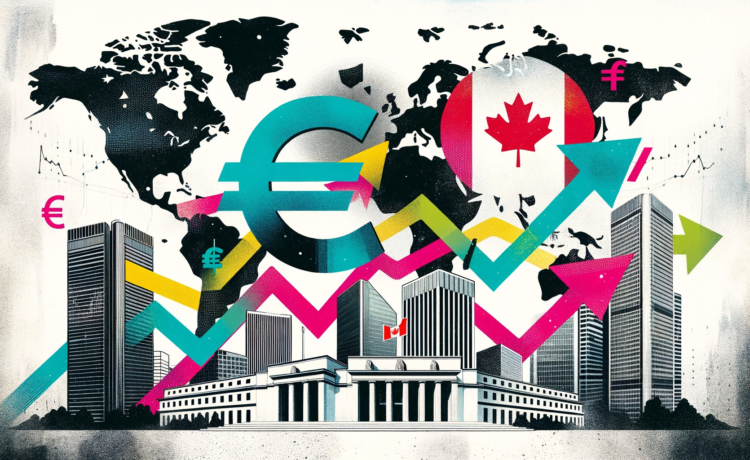What’s going on here?
The euro, Canadian dollar, and yen saw significant movements ahead of central bank meetings in Europe, Canada, and Japan, as traders eye future rate guidance.
What does this mean?
Traders are closely watching the European Central Bank (ECB), with many expecting a 25 basis point rate cut. The euro edged up 0.11% to $1.0882, approaching a two-and-a-half month high. Market projections suggest more gradual cuts are on the horizon as
inflation
remains a concern. Meanwhile, the Canadian dollar slightly rose to C$1.3679 per dollar after the Bank of Canada (BoC) cut its key
interest
rate as anticipated. Investors are also digesting US data showing moderated job growth and increased service sector activity – nearly 50 basis points of Federal Reserve (Fed) rate cuts are expected this year, starting in September.
Why should I care?
For markets: Navigating the central bank shuffle.
The euro’s recent gains signal cautious optimism among traders, but much depends on the ECB’s guidance. Sterling’s slight uptick to $1.2795 and yen stability at 156.15 per dollar reflect mixed sentiment driven by central bank strategies. Central bank policy shifts are essential for investors to monitor, as they dictate currency valuations and influence international trade dynamics.
The bigger picture: Global economic shifts at play.
The strengthening Swiss franc at 0.9701 per euro and 0.8917 per dollar highlights broader economic trends. Bank of Japan (BoJ) Governor Kazuo Ueda’s hints at reducing
bond
-buying signal a potential policy shift, impacting the yen. The Mexican peso’s 0.5% firming against the yen showcases the impact of political stability on currency strength, following a strong election victory. These movements underscore the interconnected nature of global financial policies and their wider economic implications.

